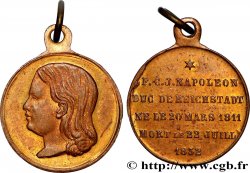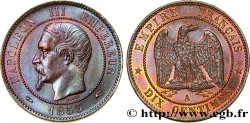Live auction - fme_576178 - SECOND EMPIRE Coffret de deux médailles, Pour la commission impériale et pour services rendus
You must signin and be an approved bidder to bid, LOGIN TO BID. Accounts are subject to approval and the approval process takes place within 48 hours. Do not wait until the day a sale closes to register. Clicking on "BID" constitutes acceptance of the terms of use of cgb.fr private live auctions.
Bids must be placed in whole Euro amounts only. The sale will start closing at the time stated on the item description; any bids received at the site after the closing time will not be executed. Transmission times may vary and bids could be rejected if you wait until the last second. For further information check the Live auction FAQ
All winning bids are subject to a 18% buyer’s fee.
All winning bids are subject to a 18% buyer’s fee.
| Estimate : | 3 000 € |
| Price : | 2 300 € |
| Maximum bid : | 2 600 € |
| End of the sale : | 16 June 2020 18:46:05 |
| bidders : | 3 bidders |
Type : Coffret de deux médailles, Pour la commission impériale et pour services rendus
Date: 1867
Mint name / Town : 75 - Paris
Metal : gold
Diameter : 67,5 mm
Orientation dies : 12 h.
Engraver PONSCARME François Joseph Hubert (1827-1903)
Weight : 256 g.
Edge : lisse + abeille BRONZE ou OR
Puncheon : Abeille (1860 - 1880)
Coments on the condition:
Bel ensemble présentant peu de traces de manipulation. Jolie patine marron pour l’exemplaire en cuivre. La médaille en or présente quelques traces de manipulation à l’avers mais un très beau revers
Catalogue references :
Obverse
Obverse legend : NAPOLÉON III - EMPEREUR.
Obverse description : Tête laurée de Napoléon III à gauche. Signé : H. PONSCARME F..
Reverse
Reverse legend : (LÉGENDES DIVERSES).
Commentary
Les deux médailles sont présentées dans leur coffret d’origine cartonné rouge avec un intérieur en feutrine et soie bleue (poids total du coffret et des médailles : 256g. Dimension du coffret : 162*99 mm). Elles ont été attribuées pour services rendus à l’occasion de l’Exposition Universelle de 1867 et pour les membres de la Commission impériale, constituée pour organiser l’Exposition Universelle alors composée de soixante membres.
La médaille en cuivre (poinçon abeille CUIVRE) porte le nom du récipiendaire : CLERC. Son revers représente deux angelots soutenant un cartouche inscrit. Poids : 161,8 g, Diamètre : 67,5 mm.
La médaille en or (poinçon abeille OR) représente au revers la Renommée volant au-dessus du globe terrestre, brandissant un plan d’architecte de l’exposition (légende : EXPOSITION. UNIVERSELLE. DE. 1867. A. PARIS. COMMISSION. IMPERIALE) Poids : 28,54g. Diamètre : 36,5 mm.
La médaille en cuivre (poinçon abeille CUIVRE) porte le nom du récipiendaire : CLERC. Son revers représente deux angelots soutenant un cartouche inscrit. Poids : 161,8 g, Diamètre : 67,5 mm.
La médaille en or (poinçon abeille OR) représente au revers la Renommée volant au-dessus du globe terrestre, brandissant un plan d’architecte de l’exposition (légende : EXPOSITION. UNIVERSELLE. DE. 1867. A. PARIS. COMMISSION. IMPERIALE) Poids : 28,54g. Diamètre : 36,5 mm.








 Report a mistake
Report a mistake Print the page
Print the page Share my selection
Share my selection Ask a question
Ask a question Consign / sell
Consign / sell
 Full data
Full data















